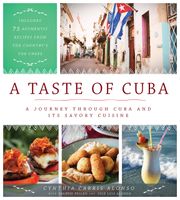Advertisement
Old Havana
Appears in
Published 2018

A folkloric dance group parades on stilts.
Walking around Old Havana feels like a mysterious and timeless walk through centuries past. Every street has been the setting for life and love, struggle and art—the varied stories of leaders, celebrities, and countless others who have flocked to this remarkable historical area. Havana was founded by the Spanish in 1519, and the city’s sheltered harbor, formed by the Bay of Havana, was a strategic nexus for treasure-seeking Europeans in the West Indies. As a result, in 1553, the city of Havana, located in the western part of Cuba, became the de facto capital of Cuba; it would officially be declared the capital in 1607, taking the role from Santiago de Cuba, on Cuba’s eastern coast. In the late sixteenth century, the Spaniards built the Morro Castle, a fortress guarding the Bay of Havana, to protect the city from pirates and other foreign invaders. From 1674 to 1740, a sea wall was built along the northern shore of Havana to further protect against invasion.

